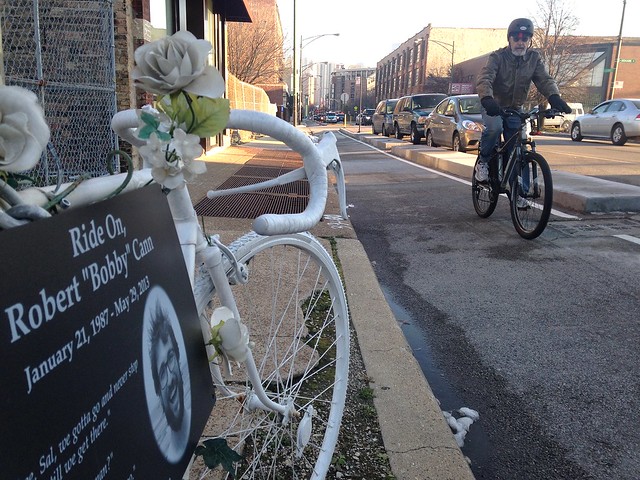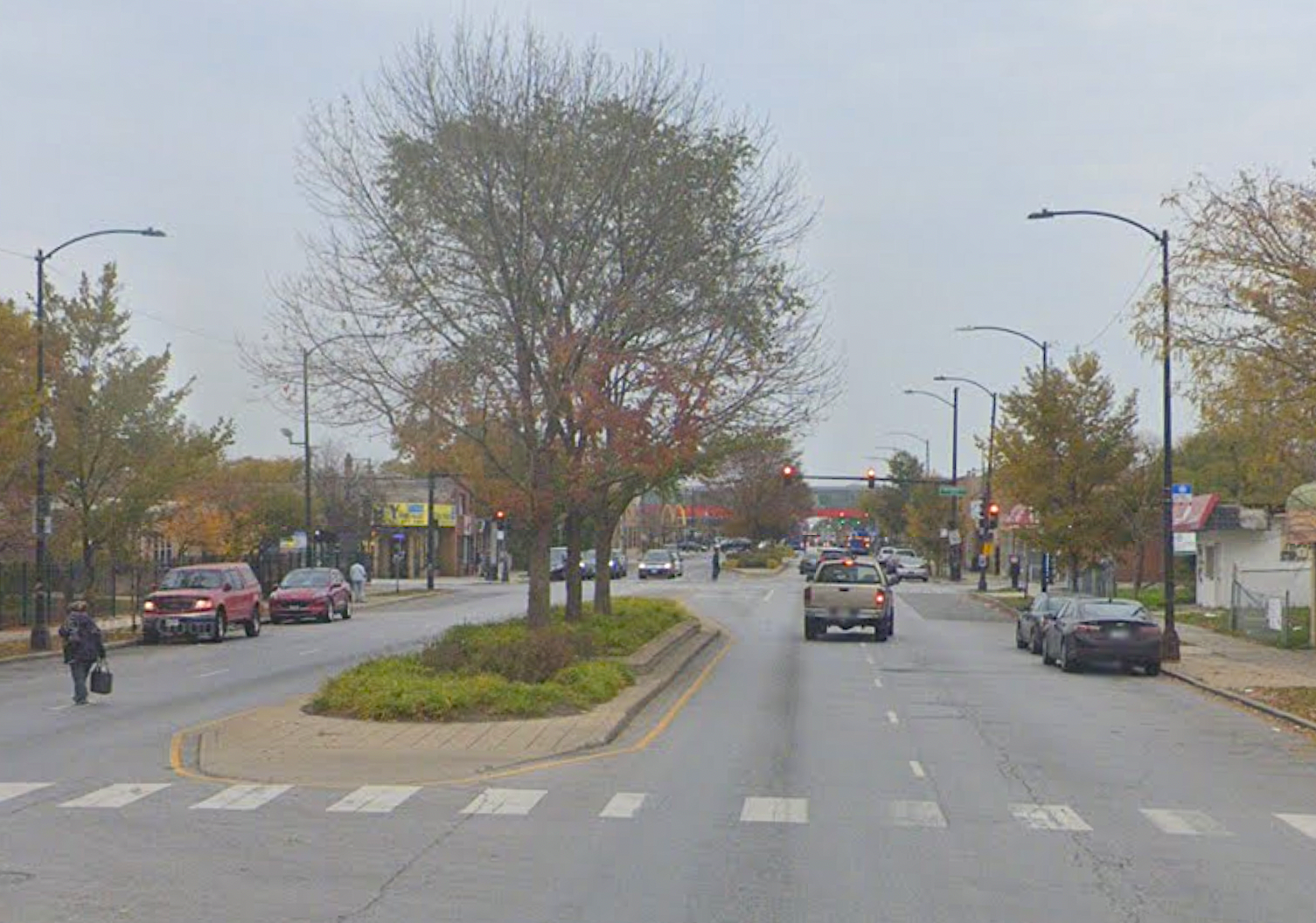For a person who makes a living doing PR, Marilyn Katz, head of River North-based MK communications, sure has trouble getting her facts straight. In the wake of the tragic death of bike courier Blaine Klingenberg, 29, fatally struck yesterday evening by a tour bus driver at Oak and Michigan, Katz fired off an inaccurate and tone-deaf op-ed in the Chicago Tribune. I’m sure she meant well, but her windshield-perspective commentary really does more harm than good for the cause of reducing fatalities on Chicago streets.
First of all, in her piece titled "Make bicyclists accountable to the same rules of the road as motorists," Katz writes from the assumption that Klingenberg is chiefly to blame for his own death. But as the Tribune itself reported, while some witnesses said the northbound cyclist ran a red light, others said the westbound Chicago Trolley driver also blew a red, because southbound traffic on Lake Shore Drive had a left-turn signal.
After the obligatory mention that she occasionally bicycles herself (known in bike advocacy circles as the “Some of My Best Friends Are Bike Lanes” talking point), Katz argues that Chicago’s increasing bike mode share is making the streets more hazardous, not to mention less convenient for drivers. “Klingenberg's death should be a wake-up call for Chicago to rethink its bicycle policies,” she writes. “All of us who drive in the city know that one never knows what the cyclist next to, behind or in front of us will do. That needs to change.”
Right, because people operating a 3,000-pound car in our city, rather than a 30-pound bike, can always be counted on to travel predictably, legally and safely. It certainly is reassuring to know that Chicago motorists never drive at deadly speeds, barrel through red lights and stop signs, or recklessly swerve between lanes. It sounds like the vast majority of, say, the 130 Chicago traffic fatalities in 2013, must have been the fault of scofflaw bike riders.
“I'm… terrified as a driver — truly afraid that I will be the one who strikes a cyclist,” Katz writes. She argues that the solution to reducing the death toll isn’t more enforcement of traffic laws for motorists, lower urban speed limits, or safer street design, but rather licensing cyclists.
“Just as we require motorists or horse-drawn carriage drivers to pass the rules-of-the-road examination, so too should bicyclists,” Katz argues. Offering more bike education opportunities for residents would certainly be a good thing. But studies have shown that bike licensing isn’t the answer for creating safer streets. Not only are such policies difficult to administrate and enforce, they result in fewer people riding bikes, which makes cyclists less visible to drivers and negatively impacts public health.

Finally, and ironically, Katz uses Klingenberg's death as a chance to complain about recently installed buffered and protected bike lanes that help prevent crashes. “A drive down Clybourn Avenue or Elston Avenue now takes twice as long as former two-lane arterial streets have been reduced to one to accommodate bike lanes and where traffic is fraught as cyclists weave in and out for advantage,” she writes.
Not only is this wrongheaded, it’s wrong. Clybourn got curb-protected bike lanes last year following the 2013 death of cyclist Bobby Cann, who was struck by an allegedly drunk, speeding driver. Contrary to popular belief, Clybourn, and most of Elston, never had two lanes in each direction. Rather, the existing travel lanes were narrowed somewhat to make room for the bike lanes, which helps discourage speeding. And could someone please explain how it's possible for a bicyclist to weave in and out of a curb-separated lane?
“There are many deaths on the streets of Chicago,” Katz concludes. “Those of bicyclists are some we can prevent.” Agreed. But the best way to do that, as well as improve safety for all other road users, is better enforcement of traffic laws for motorists, lower speed limits, and safer street design, including more “road diets” and protected bike lanes.





